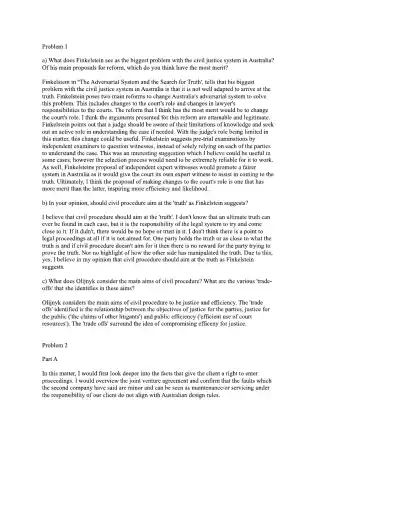Page 1

Loading page ...
Finkelstein’s critique of Australia’s civil justice system, discusses reforms to improve truth-seeking, explores Olijnyk’s aims of civil procedure, and reviews legal strategy in contractual and pre-litigation contexts.

Loading page ...
This document has 2 pages. Sign in to access the full document!